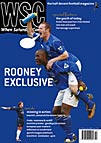 The last remaining dead cat has now been removed from the stadium of Argentina's perennial under-achievers. Ben Backwell explains what it was doing there in the first place
The last remaining dead cat has now been removed from the stadium of Argentina's perennial under-achievers. Ben Backwell explains what it was doing there in the first place
Away games at Racing’s Academia stadium, in the working-class Buenos Aires suburb of Avellaneda, are never easy. For a start, Racing fans have maintained a reputation of being Argentina’s most fanatical and vocal supporters, despite the team’s mainly abysmal performances since the late 1960s. While Boca Juniors can certainly claim the affection of more fans throughout Argentina, Racing’s fans – who refer to themselves modestly as “the No 1” – pride themselves on their loyalty. Average crowds have rarely slipped to the dismal levels of some other Argentinian clubs, despite spells in the second division, bankruptcy and suspension from the football association, and a stretch of 35 years (1966- 2001) without a major domestic title.
Completely dismissive of the disastrous performances on the pitch, Racing fans have made suffering into a virtue. On March 7, 1999, when the club was temporarily suspended from the league due to bankruptcy, they turned up in full colours at Academia all the same, throwing paper and fireworks and singing for 90 minutes as if the game were in progress.
The Racing stadium, now with a theoretical capacity of 55,000, is a huge circular affair out of keeping with its humble surroundings. Still officially known as the Estadio Juan Domingo Perón, it was built with government money in the early 1950s, the golden years of Peronism. The populist leader Perón, along with the tango icon Carlos Gardel, was a big Racing fan, and this association, together with the sky blue and white colours, make Racing the most “Argentinian” of club teams. The most popular song in the Racing end – The Glorious No 1 – is sung to the tune of Peronism’s official anthem.
The stadium is less than 100 metres away from the home of Racing’s arch rivals Independiente, the Estadio Cordero (which, though less imposing than the Academia, actually holds rather more). This makes for all kinds of problems, particularly on derby days. Independiente fans have to make an eight-block detour to reach the visitors’ entrance at Racing on the opposite corner from their own stadium, while many Racing fans have to pass by the Cordero to reach their own home end. The result is a constant stream of ambushes, often involving firearms, and a corresponding toll in deaths and injuries. The most recent incident, a pitched battle with revolvers, led to home games being suspended earlier this year. The last Racing v Independiente derby had to be played in the River Plate stadium, way out on the other side of the city.
The hardcore Racing fans are divided into three identifiable groups. The so called Imperial Guard, probably no more than 100 or so strong, manages the flags and drums, the sale of tickets given out by the club to keep them on side, buses to away games, organised robbery and drug sales within the stadium, and organises confrontations with and ambushes of visiting football firms. Next, there is a group called Racing 95. These are younger hooligans from other areas of Buenos Aires, named after the route of the buses in which they arrive at the stadium. This group generally acts as foot soldiers for the Imperial Guard veterans.
Finally, there are the “Racing Stones”. These are a large group of fans who started to group around a huge flag of Mick Jagger’s mouth in the Racing colours in the mid-1980s. Numerically the biggest group, they are in it for the football, a joint and some post-match rock music, and generally stay away from the mayhem outside the stadium. Jagger, apparently, accepted an invitation to join the club when he heard about them.
Although Academia is revered as a second home and a shrine by Racing fans, it has also been seen as the source of the club’s 35-year stretch in the football wilderness. When Racing fans were out celebrating their World Club Championship win against Celtic in 1967, Independiente supporters entered the Racing stadium and buried seven black cats around the premises. This, for many Racing fans, is the primary reason for their disastrous performance over the following years. Eventually, six of the cats were found and exhumed, but the seventh could not be located. In 1999, in the midst of bankruptcy, 100,000 Racing fans marched to the stadium, where a priest carried out an exorcism and predicted that the cause of the curse would soon come to light.
Racing continued to lose, but in early 2001 Reinaldo “Mustard” Merlo became manager of the club – now run as a private company under a ten-year concession while it pays off its creditors. Mustard, apparently a keen believer in the dark rites, ordered a comprehensive search of the stadium, which included digging up a moat that had been concreted over. Lo and behold, the remains of the missing cat were found, and Racing went on to win that year’s championship.
Racing fans, hard to put up with at the best of times, filled the stadium to capacity for much of the year and drove the rest of the city mad with a kind of religious sense of retribution. Merlo, for his pains, was unceremoniously ousted in a palace coup earlier this year and replaced by Ossie Ardiles. Mediocre performances and the humiliation of a 4-1 defeat by Independiente followed. Inevitably, reports now suggest that there may have been more than seven black cats back then in 1967. Attendances at the Racing end have not been affected.
From WSC 190 December 2002. What was happening this month